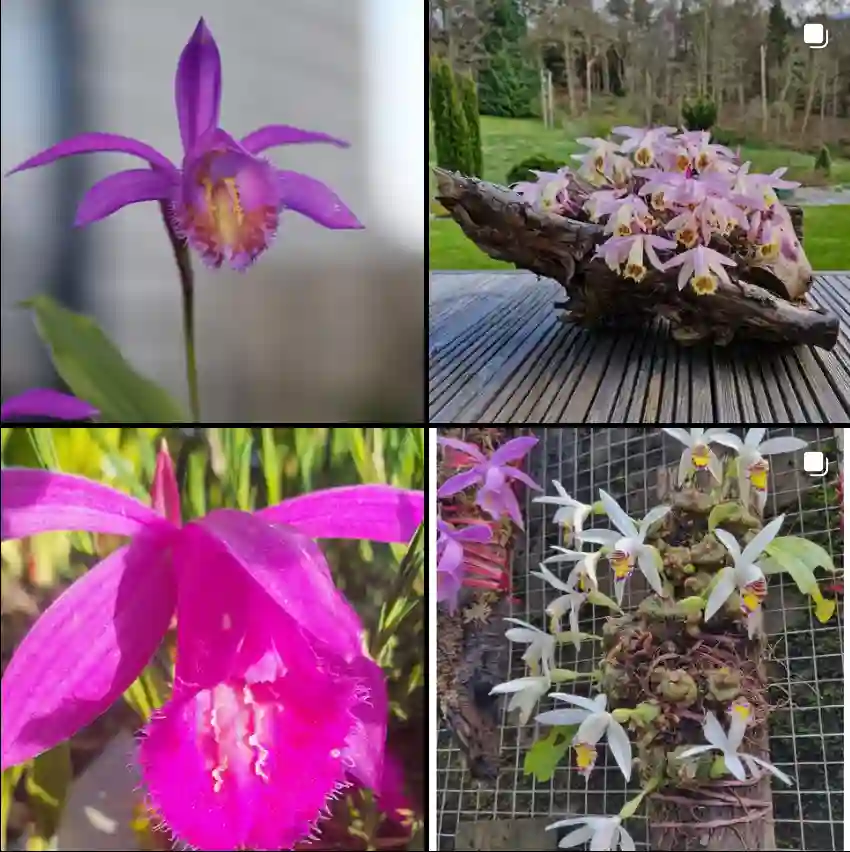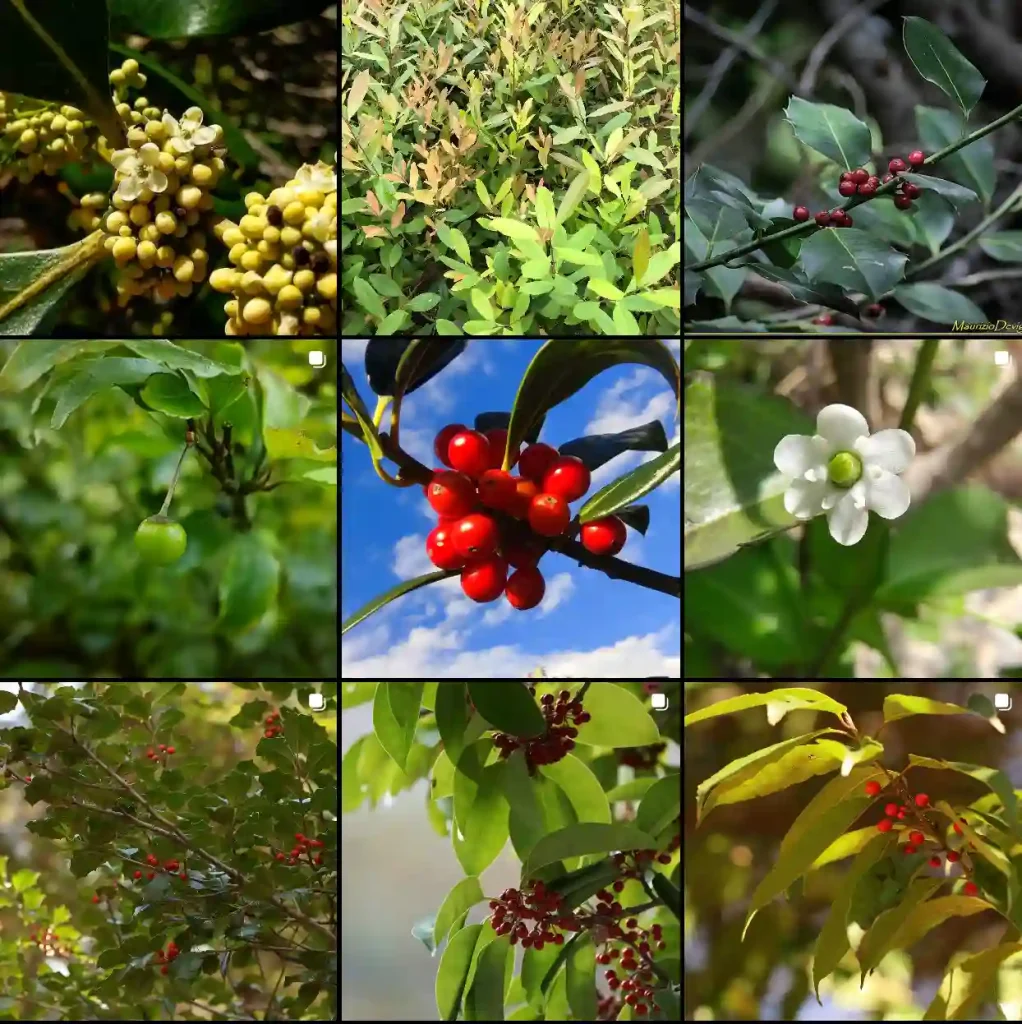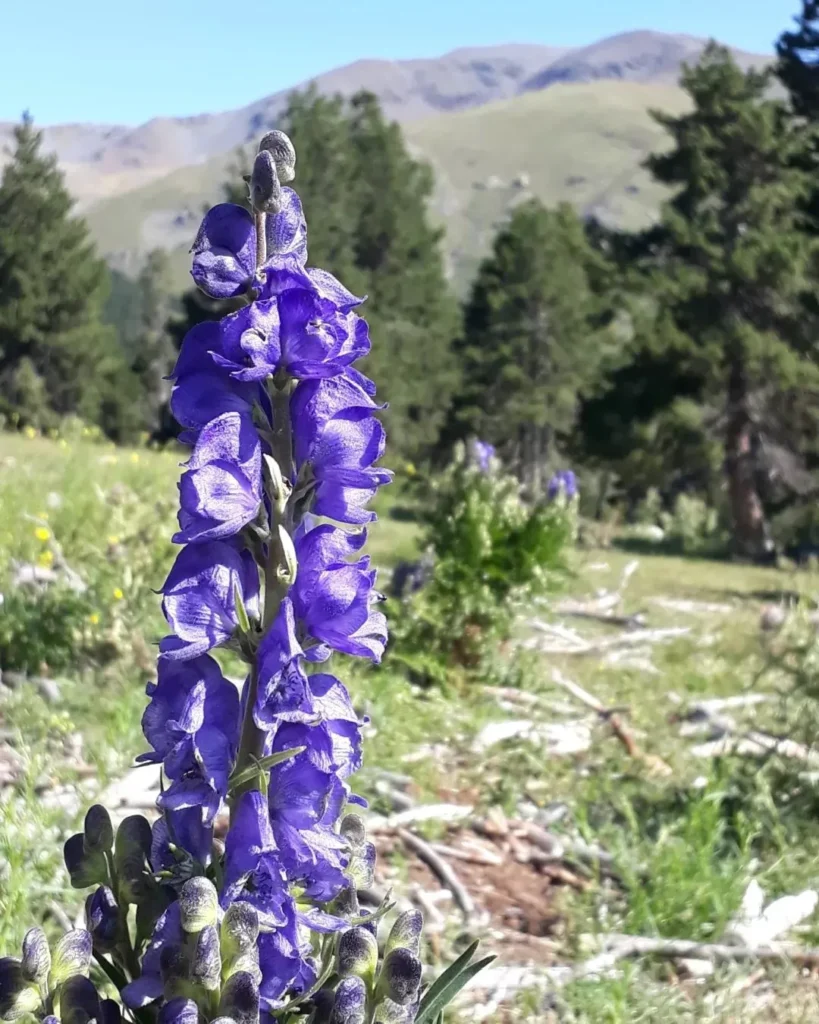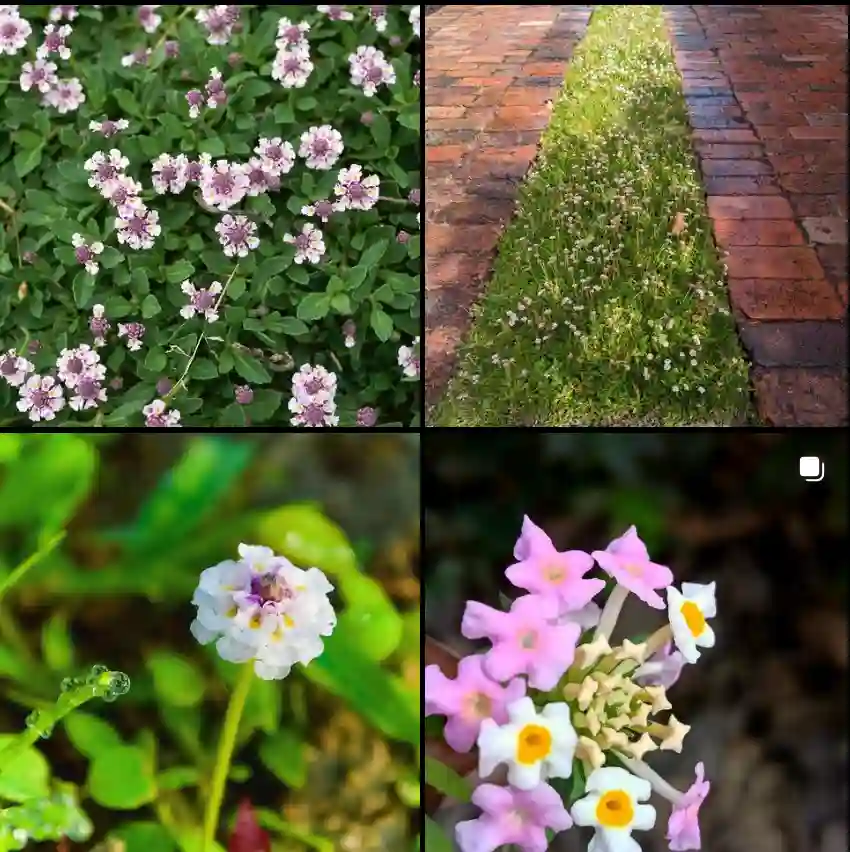The Lamiaceae family, often referred to as the mint family, is one of my personal favorites in the world of plants. It’s a large and diverse family, with many plants that I’ve encountered both in gardens and in the wild. Known for its aromatic leaves and square stems, Lamiaceae includes some of the most well-known culinary herbs and ornamental plants. What excites me about this family is its versatility, ranging from herbs used in the kitchen to beautiful flowering plants that add character to any landscape.
The Genera That Define Lamiaceae
The Lamiaceae family is vast, with around 225 genera and over 7,000 species. Here are:
- Mentha (Mint): This genus is perhaps the most recognizable in the family. I’ve grown different types of mint in my garden, from spearmint to peppermint. Mint spreads aggressively, which can be both a blessing and a curse, depending on your needs. Its refreshing scent and flavor make it a must-have for teas, salads, and summer drinks. – 39 Species in Genus Mentha – Mint Plant
- Ocimum (Basil): Basil, particularly sweet basil, is another essential in my herb garden. This genus has a variety of species, and I appreciate the way basil complements tomato dishes. The Ocimum genus has a rich, sweet aroma that fills the air when you harvest it. – 66 Species in Genus Ocimum
- Lavandula (Lavender): I can’t talk about the Lamiaceae family without mentioning lavender. The calming scent of lavender has made it a staple in my garden. I grow Lavandula angustifolia, and its vibrant purple flowers attract bees and butterflies. Its scent also serves as a natural stress reliever for me. – 49 Species in Genus Lavandula
- Salvia (Sage): Salvia is a large and diverse genus, with over 900 species. I use culinary sage, particularly Salvia officinalis, in cooking, especially around Thanksgiving. But the genus also includes many ornamental species, like Salvia splendens, which add striking colors to garden beds. – 1050 Species in Genus Salvia
- Thymus (Thyme): Another favorite of mine, thyme is hardy and easy to grow. I love the versatility of Thymus vulgaris, which pairs well with a variety of dishes, from roasted vegetables to meats. The creeping varieties of thyme also make for great ground cover in the garden. – 357 Species in Genus Thymus
- Acanthomintha (A.Gray) A.Gray
- Acanthoprasium (Benth.) Spach
- Achyrospermum Blume
- Acrotome Benth. ex Endl.
- Acrymia Prain
- Aegiphila Jacq.
- Aeollanthus C.Mart. ex Spreng.
- Agastache J.Clayton ex Gronov. – 23 Species in Genus Agastache
- Ajuga L. – 69 Species in Genus Ajuga
- Ajugoides Makino
- Alvesia Welw.
- Amasonia L.f.
- Amethystea L.
- Anisomeles R.Br.
- Apatelantha T.C.Wilson & Henwood
- Asterohyptis Epling
- Ballota L. – 18 Species in Genus Ballota
- Basilicum Moench
- Benguellia G.Taylor
- Betonica L.
- Blephilia (L.) Raf.
- Brachysola Rye
- Brazoria Engelm. & A.Gray
- Bystropogon L’Hér.
- Callicarpa L. – 164 Species in Genus Callicarpa
- Cantinoa Harley & J.F.B.Pastore
- Capitanopsis S.Moore
- Caryopteris Bunge – 8 Species in Genus Caryopteris
- Catoferia (Benth.) Benth.
- Cedronella Moench
- Chaiturus Ehrh. ex Willd.
- Chelonopsis Miq.
- Chloanthes R.Br.
- Cleonia L.
- Clerodendrum L. – 239 Species in Genus Clerodendrum
- Clinopodium L.
- Colebrookea Sm.
- Coleus Lour.
- Collinsonia L.
- Colquhounia Wall.
- Comanthosphace S.Moore
- Condea Adans.
- Congea Roxb.
- Conradina A.Gray – 5 Species in Genus Conradina
- Cornutia Plum. ex L.
- Craniotome Rchb.
- Cuminia Colla
- Cunila D.Royen
- Cyanocephalus (Pohl ex Benth.) Harley & J.F.B.Pastore
- Cyanostegia Turcz.
- Cyclotrichium (Boiss.) Manden. & Scheng.
- Cymaria Benth.
- Dasymalla Endl.
- Dicerandra Benth.
- Dicrastylis Drumm. ex Harv.
- Discretitheca P.D.Cantino
- Dracocephalum L.
- Drepanocaryum Pojark.
- Elsholtzia Willd.
- Endostemon N.E.Br.
- Eplingiella Harley & J.F.B.Pastore
- Equilabium Mwany., A.J.Paton & Culham
- Eriope Humb. & Bonpl. ex Benth.
- Eriophyton Benth.
- Eriopidion Harley
- Eriothymus (Benth.) Rchb.
- Eurysolen Prain
- Fuerstia T.C.E.Fr.
- Galeopsis L.
- Garrettia H.R.Fletcher
- Glechoma L.
- Glechon Spreng.
- Glossocarya Wall. ex Griff.
- Gmelina L.
- Gomphostemma Wall. ex Benth.
- Gontscharovia Boriss.
- Gymneia (Benth.) Harley & J.F.B.Pastore
- Hanceola Kudô
- Haplostachys (A.Gray) Hillebr.
- Haumaniastrum P.A.Duvign. & Plancke
- Hedeoma Pers.
- Heliacria Bo Li, C.L.Xiang, T.S.Hoang & Nuraliev
- Hemiandra R.Br.
- Hemigenia R.Br.
- Hemiphora (F.Muell.) F.Muell.
- Hesperozygis Epling
- Heterolamium C.Y.Wu
- Hoehnea Epling
- Holmskioldia Retz.
- Holocheila (Kudô) S.Chow
- Horminum L.
- Hosea Ridl.
- Hoslundia Vahl
- Hymenopyramis Wall. ex Griff.
- Hypenia (Mart. ex Benth.) Harley
- Hypogomphia Bunge
- Hyptidendron Harley
- Hyptis Jacq.
- Isodon (Benth.) Schrad. ex Spach
- Isoleucas O.Schwartz
- Kalaharia Baill.
- Karomia Dop
- Killickia Bräuchler, Heubl & Doroszenko
- Kudrjaschevia Pojark.
- Kurzamra Kuntze
- Lachnostachys Hook.
- Lagochilus Bunge ex Benth.
- Lagopsis (Bunge ex Benth.) Bunge
- Lamium L. – 34 Species in Genus Lamium
- Leonotis (Pers.) R.Br.
- Leonurus L.
- Lepechinia Willd.
- Leptohyptis Harley & J.F.B.Pastore
- Leucas R.Br.
- Leucosceptrum Sm.
- Loxocalyx Hemsl.
- Lycopus L.
- Macbridea Elliott ex Nutt.
- Marrubium L.
- Marsypianthes Mart. ex Benth.
- Martianthus Harley & J.F.B.Pastore
- Matsumurella Makino
- Medusantha Harley & J.F.B.Pastore
- Meehania Britton
- Melissa L. – 4 Species in Genus Melissa
- Melittis L.
- Mesosphaerum P.Browne
- Microcorys R.Br.
- Micromeria Benth.
- Microtoena Prain
- Minthostachys (Benth.) Spach
- Moluccella L.
- Monarda L. – 25 Species in Genus Monarda – Bee Balm
- Monardella Benth.
- Monochilus Fisch. & C.A.Mey.
- Mosla (Benth.) Buch.-Ham. ex Maxim.
- Muniria N.Streiber & B.J.Conn
- Nepeta L. – 298 Species in Genus Nepeta – Catmint
- Newcastelia F.Muell.
- Obtegomeria Doroszenko & P.D.Cantino
- Ombrocharis Hand.-Mazz.
- Oocephalus (Benth.) Harley & J.F.B.Pastore
- Origanum L. – 66 Species in Genus Origanum
- Orthosiphon Benth.
- Otostegia Benth.
- Ovieda L.
- Oxera Labill.
- Panzerina Soják
- Paralamium Dunn
- Paraphlomis Prain
- Pentapleura Hand.-Mazz.
- Perilla L. – Perilla Frutescens in Genus Perilla
- Perillula Maxim.
- Peronema Jack
- Petitia Jacq.
- Petraeovitex Oliv.
- Phlomidoschema (Benth.) Vved.
- Phlomis L. – 116 Species in Genus Phlomis
- Phlomoides Moench
- Phyllostegia Benth.
- Physominthe Harley & J.F.B.Pastore
- Physopsis Turcz.
- Physostegia Benth. – 12 Species in Genus Physostegia
- Piloblephis Raf.
- Pityrodia R.Br.
- Platostoma P.Beauv.
- Plectranthus L’Hér. – 83 Species in Genus Plectranthus
- Pogogyne Benth.
- Pogostemon Desf.
- Poliomintha A.Gray
- Prasium L.
- Premna L.
- Prostanthera Labill.
- Prunella L. – 13 Species in Genus Prunella
- Pseudocarpidium Millsp.
- Pseudocaryopteris (Briq.) P.D.Cantino
- Pseudochamaesphacos Parsa
- Pseudodictamnus Fabr.
- Pycnanthemum Michx. – 19 Species in Genus Pycnanthemum
- Quoya Gaudich.
- Renschia Vatke
- Rhabdocaulon (Benth.) Epling
- Rhaphiodon Schauer
- Rhododon Epling
- Rostrinucula Kudô
- Rotheca Raf.
- Roylea Wall. ex Benth.
- Rubiteucris Kudô
- Rydingia Scheen & V.A.Albert
- Saccocalyx Coss. & Durieu
- Satureja L. – 48 Species in Genus Satureja
- Schnabelia Hand.-Mazz.
- Scutellaria L. – 481 Species in Genus Scutellaria
- Sideritis L. – 191 Species in Genus Sideritis
- Siphocranion Kudô
- Sphenodesme Jack
- Stachydeoma Small
- Stachys L. – 380 Species in Genus Stachys
- Stenogyne Benth.
- Suzukia Kudô
- Symphorema Roxb.
- Synandra Nutt.
- Syncolostemon E.Mey. ex Benth.
- Tectona L.f.
- Teijsmanniodendron Koord.
- Tetraclea A.Gray
- Tetradenia Benth.
- Teucrium L. – 341 Species in Genus Teucrium
- Thorncroftia N.E.Br.
- Thymbra L.
- Tinnea Kotschy ex Hook.f.
- Trichostema L.
- Tripora P.D.Cantino
- Vitex L. – 209 Species in Genus Vitex
- Volkameria L.
- Warnockia M.W.Turner
- Wenchengia C.Y.Wu & S.Chow
- Westringia Sm. – 32 Species in Genus Westringia
- Zataria Boiss.
- Ziziphora L.
Beyond Herbs: Ornamental Lamiaceae Plants
Though the Lamiaceae family is often associated with culinary herbs, its ornamental members are equally impressive. I’ve found joy in planting species that add texture and color to my garden. A few examples that come to mind:
- Nepeta (Catmint): While it’s a favorite among cats, Nepeta faassenii is a favorite in my garden for its long-lasting blooms and drought tolerance. The silvery-green foliage and soft purple flowers attract pollinators, making it a win-win for any pollinator garden.
- Perovskia (Russian Sage): This woody, drought-tolerant perennial has become a standout in my landscape design. With its spires of lavender-blue flowers and silver-gray foliage, Perovskia atriplicifolia creates a dramatic effect when planted en masse. I also appreciate its low maintenance.
- Stachys (Lamb’s Ear): I’ve planted Stachys byzantina as a ground cover for its soft, velvety leaves. It creates a nice contrast with other plants due to its unique texture. Plus, it’s hardy and spreads well in sunny areas.
Why Lamiaceae Matters
What I find fascinating about the Lamiaceae family is the combination of utility and beauty. The aromatic compounds in many species make them valuable for culinary, medicinal, and ornamental purposes. For example, I often use lavender essential oil to help with relaxation. At the same time, I enjoy cooking with herbs like basil, thyme, and rosemary.
Additionally, many members of this family are important for pollinators. Lavender and catmint, in particular, attract bees, butterflies, and other beneficial insects. I’ve noticed that adding these plants to my garden not only improves its aesthetic but also supports local ecosystems.
Adaptability and Cultivation
One thing I admire about the Lamiaceae family is its adaptability. Many species are drought-tolerant and thrive in well-drained soils, making them suitable for a wide range of climates and conditions. I’ve successfully grown plants from this family both in containers and in the ground, and I appreciate how easy they are to care for.
For anyone looking to start gardening or enhance their current garden, I always recommend starting with a few key members of the Lamiaceae family. Mint, thyme, and rosemary are great beginner plants due to their hardiness and low maintenance. For those interested in adding ornamental value, catmint and Russian sage provide long-lasting beauty and minimal upkeep.
Final Thoughts
The Lamiaceae family offers an incredible range of plants that serve both practical and aesthetic purposes. Whether you’re looking to enhance your culinary creations with fresh herbs or add texture and fragrance to your garden, there’s a plant in this family for you. From my experience, the members of this family are some of the most rewarding plants to grow, both for their ease of care and their contributions to the overall garden ecosystem.
If i die, water my plants!



